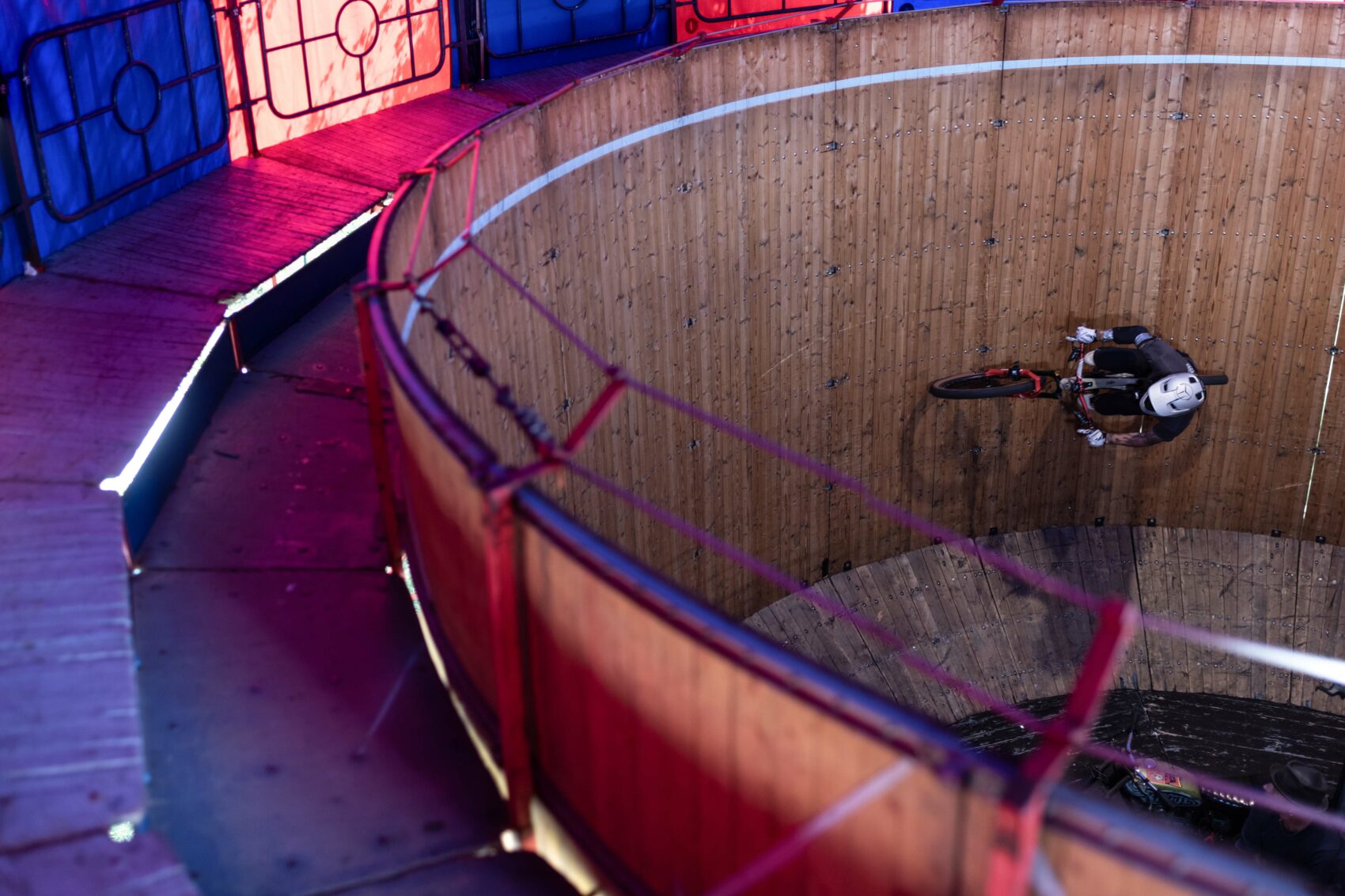Richard Gasperotti – First e-biker to ride the Wall of Death
“It hurt, but I made it,” were the first words of Richard Gasperotti, the first ever e-biker in the world to ride the wall of death. He made his record-breaking ride on a Mondraker electric bike driven by an electric motor from Bosch eBike Systems.
The Wall of Death is an old fairground attraction made of wood and built in the shape of a giant barrel, with stunt riders on motorcycles riding around the inner shell for the amusement of the spectators.
A French new circus group called Mur De La Mort has recreated the attraction and is touring the world. Biker Richard Gasperotti approached the collective during a several-day stop in Prague, the capital of the Czech Republic.

“I’ve wanted to try the Wall of Death ride since I was a little boy when I saw pictures of the attraction,” says the biker, who has in the past been whisked on his bicycle over the runway behind a motorcycle at a world-breaking speed of 211 km per hour. “However, I never imagined how challenging the Wall of Death ride would be,” adds the extreme athlete known as Gaspi. In the past, he also descended six active volcanoes or tackled the Olympic bobsleigh track in Sarajevo on his bike.

While advanced circus riders race their motorcycles over vertical walls without holding the handlebars and sometimes blindfolded, Gaspi experienced four bad crashes before he could celebrate a few without falling off. “Normally it takes about half a year to learn to ride the wall of death so confidently that you can start adding more tricks. Gaspi learned it in one afternoon, he has my respect,” says a crew leader Raoul, who has been doing this dangerous discipline for over thirty years.

“The hardest thing was to switch the perception from horizontal to vertical. It’s a completely different perception of reality. The second challenge is the extremely slippery surface of the wooden walls. During one ride, my front wheel slipped, and I fell from three metres onto my back,” says the biker, who gained confidence and started routinely circling soon after several attempts. Moreover, constant pedalling made the ride very demanding in therms of balance as spinning the cranks challenged the rider’s stabilty every moment. There was also high risk of hitting the pedal against the wooden wall when switching from horizontal to vertical ride.

The collective Le Mur de la Mort (The Wall of Death) continues the famous fairground tradition of the 1950s and is the last performance of its kind in France. The show Mortel Jus de Mortel combines circus, theatre, fairground parade, and backstage life.
The original Wall of Death dates from around 1930 and was built in the United States, the birthplace of the attraction. The story is blurred, but the stage arrived in Europe after several years.

It passed through several families, the Abbins, the Coutards, the Romanos, the Rivières and perhaps others, before ending its rich fairground history with Adrien Lapoumeroulie, who, at the end of his career, sold it to two ambitious young theatre actors who soon lost their teeth.
Stored in a barn in the Auvergne region around 1990, it was abandoned and left to rot, until, almost by coincidence, three friends rescued it from oblivion and destruction. Once dried, it took 5 years for the Wall of death to regain its original varnish. The enthusiasts then restored the wooden surface and rebuilt the metal construction.

At the same time, given its great age and the originality of its design, it was listed as a historic monument.
The original access ramps had to be replaced by two scaffolding-type staircases to increase the capacity of the audience from 50 to the current 110 spectators, which, by modern scales, still offers almost an intimate show. It is nowadays one of the last three existing walls of death in the world.

Rider: Richard GASPI Gasperotti
Photos: Miloš Štáfek
Video/Edit: Jakub BIG BUBA Ouvín
Article: Adam PIRATE Maršál
Big Thanx to: Le Mur de la Mort CREW www.lemurdelamort.com
If you enjoyed this article then why not check out some of our other articles:















